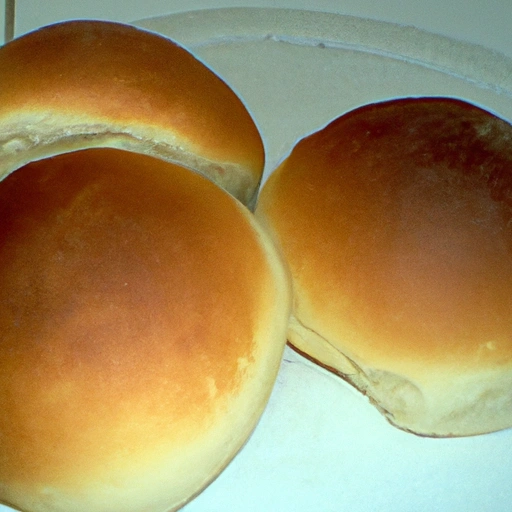Bun
Description

A bun is a small, typically round piece of bread that serves as a versatile ingredient in countless recipes. It can be sweet or savory, and its texture can vary from soft and fluffy to dense and hearty. Buns are made from various types of dough, including but not limited to wheat, rye, and gluten-free alternatives, and are often enhanced with ingredients such as milk, butter, eggs, sugar, and yeast.
Common uses
Buns are commonly used as a base for sandwiches, burgers, and sliders. They can also be consumed alone as a snack or a sweet treat when incorporated with ingredients like cinnamon, sugar, and fruit. Buns play a significant role in various cultural and religious traditions, such as hot cross buns during Easter or sweetened red bean buns in Asian cuisine.
Nutritional value
Calories
An average-sized bun (approximately 43 grams or 1.5 ounces) typically contains around 120 calories.
Protein
Protein content in a bun is usually about 4 grams (0.14 ounces), depending on the ingredients used.
Fat
The fat content in a standard bun is relatively low, around 1.5 grams (0.05 ounces).
Carbohydrates
Carbohydrates are the primary source of energy in a bun, with about 20 grams (0.7 ounces) present.
Vitamins
Depending on the flour and additional ingredients, buns can contain varying levels of B vitamins, particularly niacin, thiamin, and folate.
Minerals
Minerals such as iron, calcium, and potassium can be found in buns, with quantities varying based on the type of flour and fortification.
Health benefits
Consuming buns made from whole grain flour can provide dietary fiber, which is beneficial for digestive health. The presence of B vitamins supports energy metabolism, and depending on the ingredients, buns can be a part of a balanced diet.
Potential risks
Buns made from refined white flour are lower in fiber and nutrients compared to their whole grain counterparts. Overconsumption of buns, especially those high in added sugars and fats, can lead to weight gain and may contribute to health issues such as diabetes and heart disease.
Common recipes
Buns are a key ingredient in recipes such as classic hamburgers, hot dogs, various types of sandwiches, and sweet treats like cinnamon rolls or cream-filled buns.
Cooking methods
Buns can be baked, steamed, or even fried depending on the desired texture and recipe. They may be plain, topped with seeds, or feature ingredients like dried fruit or nuts within the dough.
Pairing with other ingredients
Buns pair well with a wide range of fillings including meats, cheeses, vegetables, and condiments. Sweet buns complement fillings like pastry cream, fruit preserves, and chocolate.
Summary
Buns are a beloved and versatile bread product enjoyed in numerous forms around the world. Whether used for savory sandwiches and burgers or sweet pastries and snacks, buns are an integral part of many culinary traditions. While they offer certain nutritional benefits, it's important to consume them in moderation as part of a balanced diet.